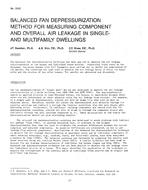Click here to purchase
Improving the thermal condition within old construction to meet current standards is a subject that every country needs to tackle when addressing energy efficiency and human comfort, especially in Lebanon where old buildings account for a substantial percentage of the total number of residential buildings. Retrofitting these old buildings aims to decrease the energy consumed to maintain comfortable conditions inside residential spaces. This study assesses the thermal behavior of four different walls located in a public school in Beirut, three are made of sandstone and the other is made out of hollow concrete blocks. The goal of this study is to propose modifications to the old walls to enhance the thermal comfort inside each classroom. To do so, recorded temperature data were analyzed, and the thermal behavior of the walls was described using the thermal time lag and decrement factors. Furthermore, energy models for the four spaces were created using the OpenStudio application and the Sketchup plugin. These models were calibrated according to the standards set by ASHRAE and validated for a full year. Subsequently, unavailable construction data was estimated using the Markov Chain Monte Carlo (MCMC) method by the means of the interface linking python and the building energy simulator EnergyPlus. The targeted variables were the thermal mass of the floor and the wall. The wall thermal mass was simulated to be 0.8×105 J/m3K or 1.19 BTU/ft3F while it was estimated to be 0.85×105 J/m3K or 1.26 BTU/ft3F which validates the accuracy of the MCMC model. The resultant building energy models had low error values ranging from 3.1% to 7.2%. These results show that coupling the Markov Chain Monte Carlo method with building energy models can replicate a given thermal space with high accuracy.
Product Details
- Published:
- 2022
- Number of Pages:
- 9
- Units of Measure:
- Dual
- File Size:
- 1 file , 2.7 MB
- Product Code(s):
- D-ICEB22-17
- Note:
- This product is unavailable in Russia, Belarus


